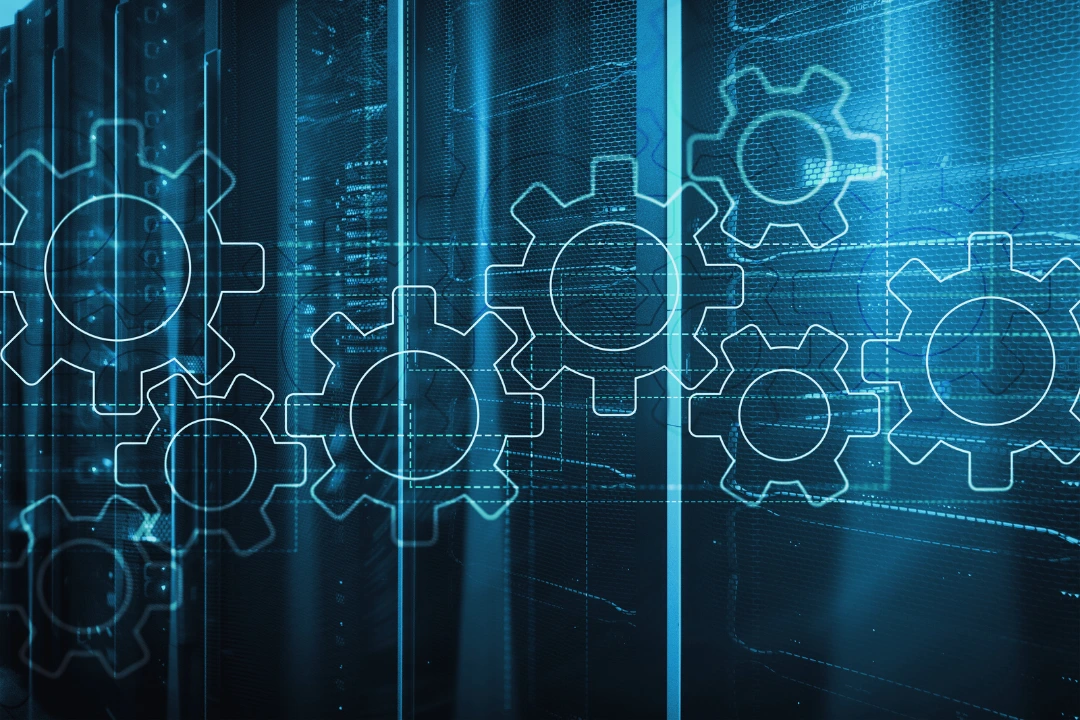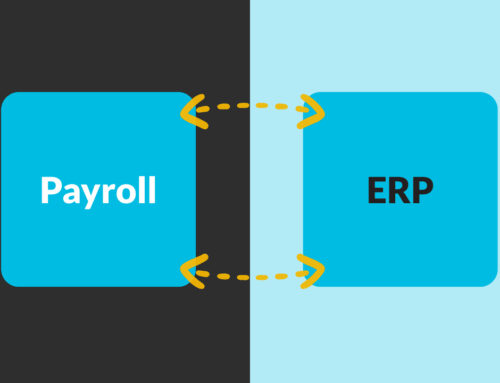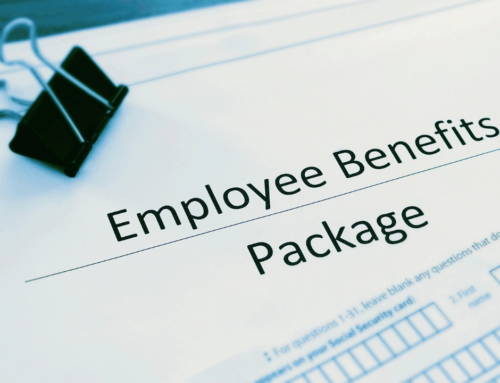Running payroll and managing HR may not be the most glamorous part of running a business—but it’s one of the most essential. Whether you’re onboarding new employees, processing paychecks, managing time off, or handling benefits, the systems you use behind the scenes have a major impact on your business’s efficiency, accuracy, and compliance.
That’s why many organizations rely on a unified payroll and HR platform, like Inova to streamline processes and centralize their workforce data. But there’s another game-changing opportunity: integrating your payroll and HR system with your accounting platform, such as Acumatica, Sage Intacct, or QuickBooks Online.
If you’re looking to integrate your payroll, HR, and accounting systems for better efficiency and visibility, here are 10 reasons why doing so pays off in more ways than one.
1. Simplify Processes and Eliminate Redundancies
When systems don’t talk to each other, your teams end up duplicating efforts. A change made in HR needs to be manually entered into payroll. A payroll report has to be exported and rekeyed into your accounting platform. It’s inefficient and opens the door to mistakes.
And when you integrate your payroll, HR, and accounting workflows, accuracy becomes second nature—resulting in cleaner records and fewer corrections. For example, when you enter a new hire into a unified payroll and HR platform, their information automatically syncs with accounting—eliminating the need for re-entry and reconciliation.
Key benefits:
- Fewer Errors: Automated data sync helps you avoid typos and payroll miscalculations.
- Time Savings: Stop wasting hours on duplicate data entry or reconciling mismatches.
- Cross-Team Efficiency: Everyone from HR to finance is working from the same, up-to-date information.
This also means payroll adjustments, bonuses, and terminations get communicated instantly to accounting—ensuring records and reporting stay aligned.
2. Boost Accuracy Across the Board
Accurate data is the foundation of trust and reliability in any organization. When payroll, HR, and accounting operate in silos, inconsistencies and discrepancies can creep in quickly.
For example, if an employee’s title or department changes in HR but isn’t updated in payroll or accounting, it could affect job costing, tax reporting, or even benefits eligibility. Integrated systems help eliminate mistakes like these by maintaining a single source of truth.
What you gain:
- Accurate Paychecks: Correct tax and benefit calculations, every time
- Real-Time Data Sync: Changes made in one place reflect everywhere
- Clean Records: Reliable data for reports, audits, and compliance
When systems communicate effortlessly, the risk of discrepancies plummets. Employees get paid accurately and on time, and you get the peace of mind that comes with reliable data.
3. Stay Ahead of Compliance Requirements
Tax regulations, wage laws, and labor policies are constantly evolving. Failing to stay compliant—especially across payroll and HR—can result in penalties, audits, and damaged employee relationships.
Integrate your payroll, HR, and accounting platforms to take the guesswork out of compliance. Integrated systems will ensure your employee records, payroll filings, and financial reports stay aligned and up to date.
Benefits include:
- Automated Tax Updates: Stay current with changing federal, state, and local laws
- Centralized Recordkeeping: Easy access to documentation for audits and filings
- Deadline Alerts: Built-in reminders to keep you proactive, not reactive
Plus, when your accounting system pulls accurate data directly from payroll, your quarterly and year-end reports are faster and easier to generate. Another bonus? Integrated systems can automatically adapt to regulatory changes. Whether it’s a new tax rate or updated labor laws, your system stays current without the need for manual adjustments, minimizing your risk of penalties.
4. Improve Your Employee’s Experience
Today’s employees expect a modern, seamless experience—from their first day on the job through every paycheck and life event. Integrated systems help you deliver just that.
For example, during onboarding, employees can enter their information once, and it syncs across payroll, benefits, and financial systems. They can log in to view pay stubs, manage direct deposit, or update their tax info—without needing to call HR.
Top improvements:
- Faster Onboarding: Set up payroll, benefits, and taxes in a single workflow
- Self-Service Access: Employees can manage their own information with ease
- Consistent Leave Tracking: PTO and sick leave stay updated across all systems
When employees can easily access their own information, it reduces frustration and boosts satisfaction. It also frees up your HR team from fielding basic questions, letting them focus on more strategic initiatives.
Integrated payroll, HR, and accounting systems also facilitate better communication during employee transitions. Whether it’s a promotion, departmental transfer, or exit, all relevant information is updated across platforms seamlessly, reducing administrative hiccups.
5. Make Data-Driven Decisions
Integrated systems give you instant access to meaningful, real-time insights across your workforce and financials. Want to know how much a department is spending on overtime? Or track the ROI of a recent hiring surge?
With payroll, HR, and accounting systems working together, those insights are just a few clicks away.
Integrated systems give you the power to:
- Build customizable dashboards: Visualize key metrics like labor costs or turnover rates.
- Track Labor Costs: Analyze spend by department, role, or location
- Spot Trends: Use data to adjust hiring, scheduling, or resource allocation
When you integrate your payroll, HR, and accounting systems—especially with powerful accounting platforms like Acumatica, Sage Intacct, or QuickBooks Online—you unlock faster reporting, better forecasting, and data you can actually act on. Your leadership team will love the ability to access detailed, up-to-date reports without waiting for data pulls or manual reconciliations.
6. Scale Effortlessly as You Grow
Growth should be exciting—not overwhelming. But if your systems don’t scale with you, each new hire or expansion multiplies your administrative workload.
A unified payroll and HR system, integrated with your accounting software, sets you up to scale smoothly. You can onboard new employees quickly, manage payroll across multiple locations, and handle financial reporting for multiple entities—all from one connected ecosystem.
Integration helps you:
- Support Multiple Entities: Easily manage multiple locations, brands, or business units
- Onboard Quickly: Add new employees without the paperwork pileup
- Work from Anywhere: Cloud-based systems keep your team connected, no matter where they are
Whether you’re growing steadily or planning for rapid expansion, integration ensures your operations keep up. If you integrate your payroll, HR, and accounting systems you’ll be better equipped to scale without losing visibility or control.
7. Achieve Significant Cost Savings
Whether you’re growing steadily or planning for rapid expansion, integration ensures your operations keep up.
You’ll reduce costs by:
- Reduced Administrative Costs: Automate tasks that used to require hours of work
- Avoid Compliance Penalties: Accurate payroll and reporting prevent costly fines and rework.
- Lowering Turnover: A better employee experience leads to better retention
Together, these savings free up budget that can be reinvested into growth, technology, or other high-impact business priorities. One of the simplest ways to cut costs and increase efficiency is to integrate your payroll, HR, and accounting functions into a single connected ecosystem.
8. Strengthen Data Security
You’re dealing with highly sensitive information—social security numbers, compensation details, health benefits, and more. Keeping that data secure is critical to building trust and staying compliant with privacy laws.
Integrated systems offer more robust security than fragmented processes.
- Role-Based Access: Ensure only authorized personnel can access specific data.
- Data Encryption: Protect sensitive information during storage and transmission.
- Regular Updates: Cloud-based platforms handle updates to mitigate emerging security risks.
By consolidating systems and reducing the need for file transfers and manual uploads, you shrink the risk surface for data breaches—helping improve your organization’s cybersecurity defenses.
9. Unlock a Unified Business Ecosystem
Siloed systems can lead to confusion, delays, and misaligned decision-making. Integration eliminates those silos and creates a synchronized flow of data between departments.
Imagine a world where HR knows what finance knows, and finance knows what HR knows—in real time.
Integration delivers:
- Direct Payroll Sync: Payroll entries flow automatically into your general ledger
- Accurate Cost Allocation: Assign labor expenses to jobs, departments, or projects with ease
- Improved Collaboration: Real-time data keeps everyone on the same page
With a unified ecosystem, you gain operational clarity and alignment that drives better business outcomes.
10. Future-Proof Your Business
The business landscape is constantly changing. Your systems should be able to adapt—not hold you back.
Integrated, cloud-based platforms offer the flexibility to adopt new tools and respond to changing business needs. Whether you’re switching accounting platforms, updating your benefits provider, or automating a new compliance process, integration gives you room to grow and evolve.
Future-proofing looks like:
- Faster Innovation Adoption: Embrace AI, automation, and analytics features sooner
- Built-In Compliance: Adapt seamlessly to regulatory changes without overhauling your system.
- Scalable Infrastructure: Grow confidently without replatforming every few years
With the right setup, your team can focus on the future instead of fighting with fragmented systems.
Ready to Integrate Your Payroll, HR, and Accounting Systems?
If you’re already using a unified system like Inova for HR and payroll, integrating it with your accounting platform—whether that’s Acumatica, Sage Intacct, QuickBooks online, or another solution—is the next step toward streamlined operations, better data, and faster decisions.
Still managing HR and payroll in separate systems? Using a solution like Inova can unify your data first—then connect it with your accounting platform for a complete, integrated business solution.
Wherever you’re starting—and whichever accounting platform you use—we’ll help you connect the dots and unlock your full potential. Learn more about our integration partners or contact us today to get started!




